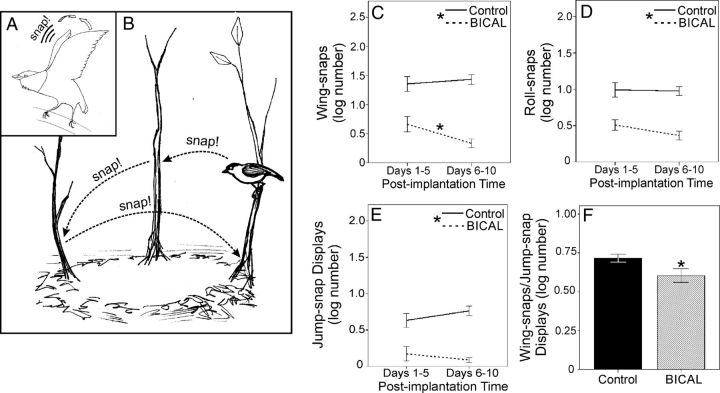Figure 3.
Impact of peripheral AR antagonism on wild, adult male golden-collared manakin display behavior. A, Schematic of a reproductively active male hitting his wings together above his head to produce either a wing-snap sonation (single hit) or a roll-snap sonation (multiple, rapid hits). B, Schematic of a reproductively active bird performing his jump-snap display, in which he rapidly leaps from sapling to sapling around an arena that he has cleared for himself on the forest floor. During each of these leaps, the male snaps his wings together in midair. Average number of wing-snaps (C), roll-snaps (D), jump-snap displays (E), and average number of snaps per jump-snap display (F) is shown. Due to infrequent jump-snap displaying in BICAL birds (see panel E), sample sizes for snaps per jump-snap display in BICAL birds (F) were low; thus, snaps per jump-snap display data were pooled across postimplantation time. Data represent means ± 1 SEM. In all line graphs, asterisks within the legend denote a significant effect of BICAL treatment (P < .05). Asterisks above specific lines denote significant changes in behavior within individuals of the same treatment group (P < .05). Solid lines and black bars represent controls, whereas dashed lines and hatched lines represent BICAL treated birds.

